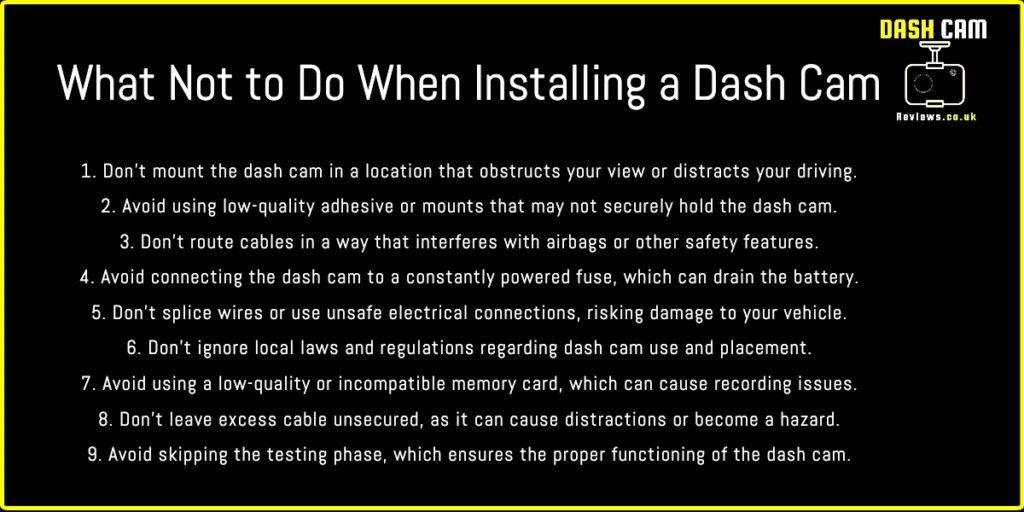Dash cams have become an essential addition to vehicles for various reasons, such as increasing driver safety, capturing evidence in case of accidents, and even for monitoring your car when it’s parked. In this article, we’ll guide you through the process of installing a dash cam in your Nissan Micra, ensuring you choose the right equipment and follow the correct steps.
Why Install a Dash Cam in Your Nissan Micra?
Dash cams are increasingly popular due to their numerous benefits. They provide an unbiased record of incidents, can help improve driver behaviour, and may even lead to lower insurance premiums. For Nissan Micra owners, adding a dash cam is a smart decision to enhance safety and protect your investment.
Preparing for Installation
Before starting the installation process, gather the necessary tools and equipment and ensure you follow safety precautions.
Tools and Equipment
Typically, you’ll need a dash cam, a power cable or hardwire kit, cable clips or adhesive mounts, and a trim removal tool. Some dash cams may come with these items included, so check the product specifications before purchasing additional equipment.
Safety Precautions
Before working on any electrical components in your Nissan Micra, make sure to disconnect the vehicle’s battery to prevent any electrical accidents or damage.
Dash Cam Installation Process
Now that you’ve chosen your dash cam and gathered the necessary tools, it’s time to start the installation.
Positioning the Dash Cam
First, find the ideal location for your dash cam, typically behind the rearview mirror. Ensure it doesn’t obstruct your view and that the lens faces the front of the vehicle.
Connecting the Power Source
There are two common power options: connecting to the vehicle’s 12V socket or hardwiring directly to the fuse box. The 12V socket is simpler but may leave a cable dangling, whereas hardwiring is more discreet but requires more effort.
Wiring and Cable and Cable Management
Once the power source is connected, route the cables along the edge of the windshield, tucking them behind the trim or using cable clips for a clean appearance. Continue running the cables towards the power source, ensuring they don’t obstruct your view or interfere with any vehicle controls.
Testing the Dash Cam
Before finalizing the installation, turn on your Nissan Micra and test the dash cam to ensure it’s functioning correctly. Check for proper video quality, correct date and time, and any other essential features you’ve chosen.
Post-installation Tips
After successfully installing your dash cam, consider these tips to maintain optimal performance.
Regular Maintenance
Regularly check the dash cam’s lens for dust or debris, and ensure the device is securely attached to the mount. Additionally, it’s essential to keep the device’s firmware up-to-date for the best performance.
Dash Cam Settings
Take the time to familiarize yourself with the dash cam’s settings and adjust them according to your preferences. This may include setting the video quality, loop recording duration, and enabling parking mode or motion detection.
Common Issues and Troubleshooting
If you encounter any issues with your Nissan Micra dash cam installation, first consult the user manual or manufacturer’s website for troubleshooting tips. Common issues include power problems, poor video quality, or difficulties with specific features.
Benefits of a Dash Cam in Your Nissan Micra
A dash cam offers numerous benefits for Nissan Micra owners, such as providing an unbiased record of incidents, encouraging safer driving habits, and potentially lowering insurance premiums. Additionally, some dash cams offer parking mode or motion detection features, which can help protect your vehicle while parked.
Frequently Asked Questions
How Not To Install A Dash Cam.

H3: How long does it take to install a dash cam in a Nissan Micra?
The installation time can vary depending on your experience and the specific dash cam model. However, most installations can be completed within 1-2 hours.
H3: Can I install a rear dash cam in my Nissan Micra as well?
Yes, many dash cams come with a separate rear camera or can be paired with one. Installing a rear dash cam involves a similar process, with additional wiring running to the back of the vehicle.
H3: Is it legal to use a dash cam in my Nissan Micra?
Dash cam use is generally legal; however, it’s essential to ensure it doesn’t obstruct your view or violate any local privacy laws. Always check your region’s regulations before installing a dash cam.
H3: Will a dash cam drain my Nissan Micra’s battery?
Most dash cams use minimal power, so it’s unlikely to drain your battery. However, if you’re using parking mode or motion detection features, it’s essential to monitor your battery’s health and consider using a battery protection device.
H3: Can I install the dash cam myself, or do I need a professional?
Many people successfully install dash cams themselves by following the manufacturer’s instructions or online tutorials. However, if you’re uncomfortable working with your vehicle’s electrical system or want a more discreet installation, you may prefer to hire a professional.
Conclusion
In conclusion, a Nissan Micra dash cam install is a valuable addition to your vehicle, enhancing safety and providing essential evidence in case of an accident. By carefully selecting the right dash cam, following the installation steps, and maintaining the device, you can enjoy the numerous benefits a dash cam offers.




